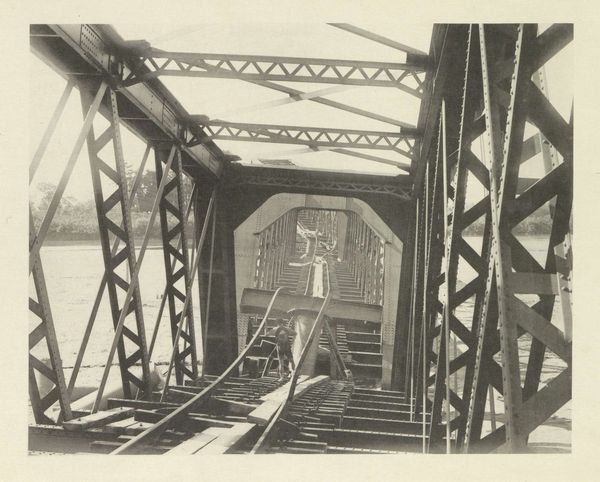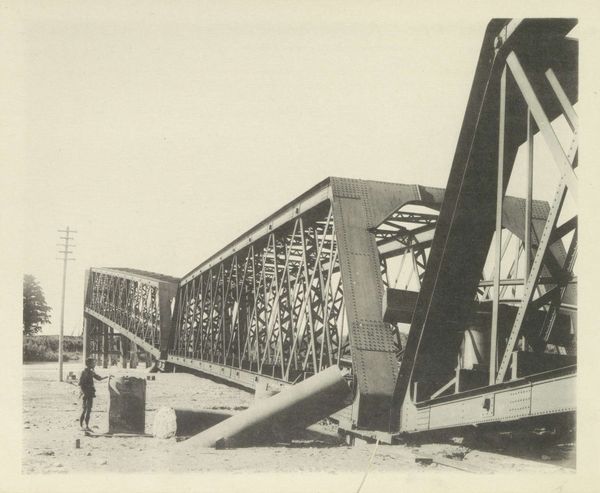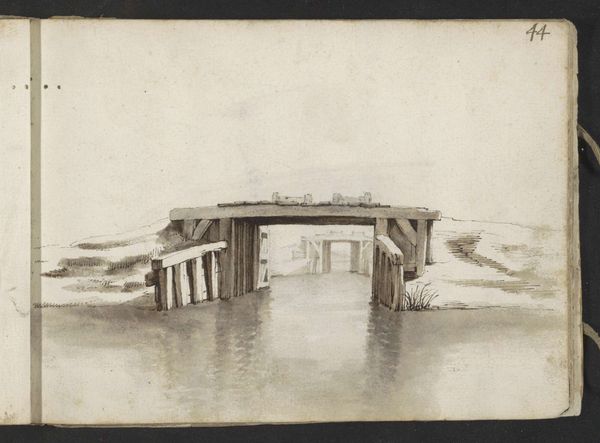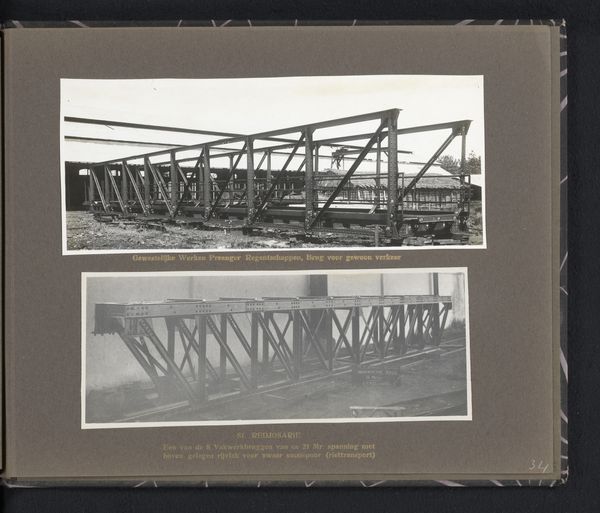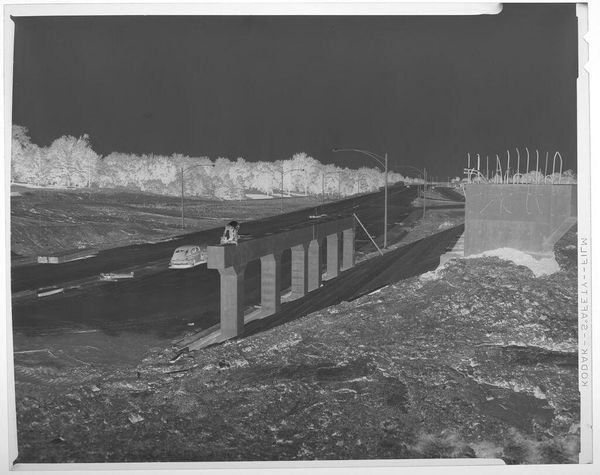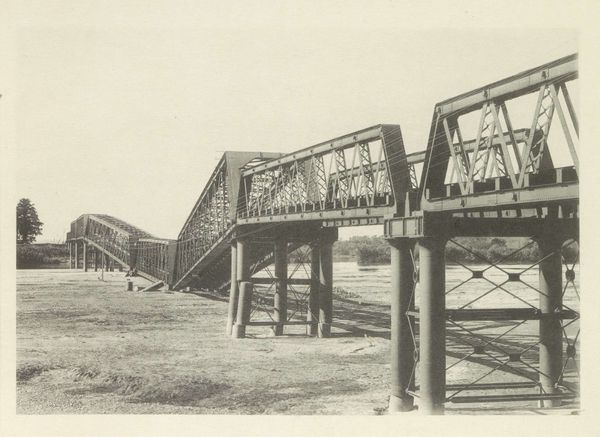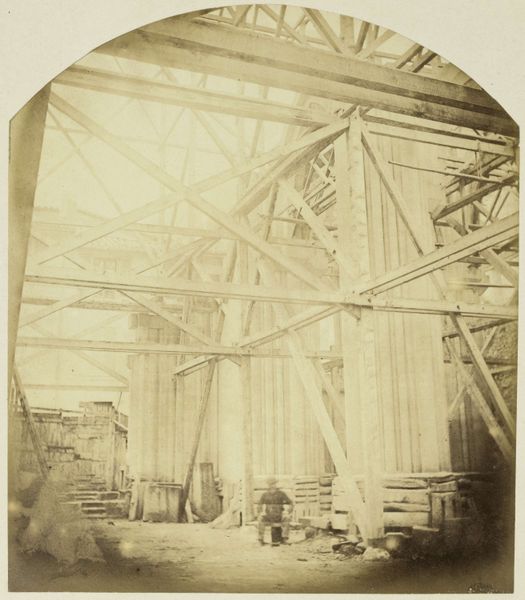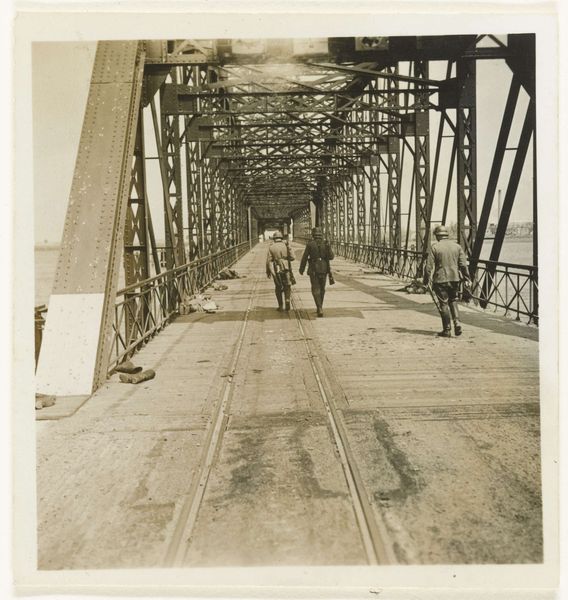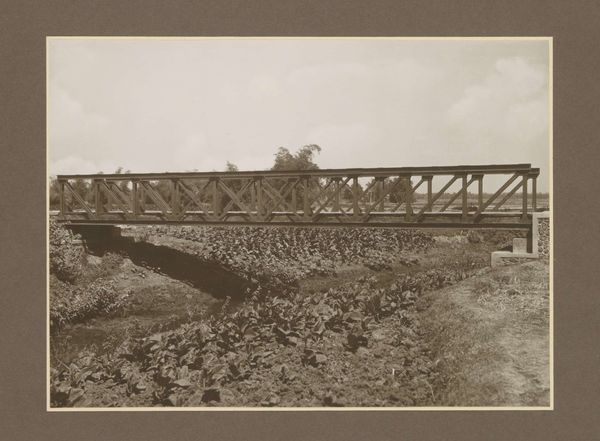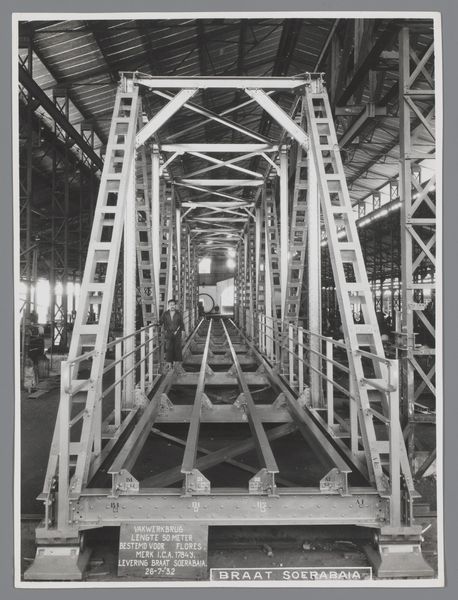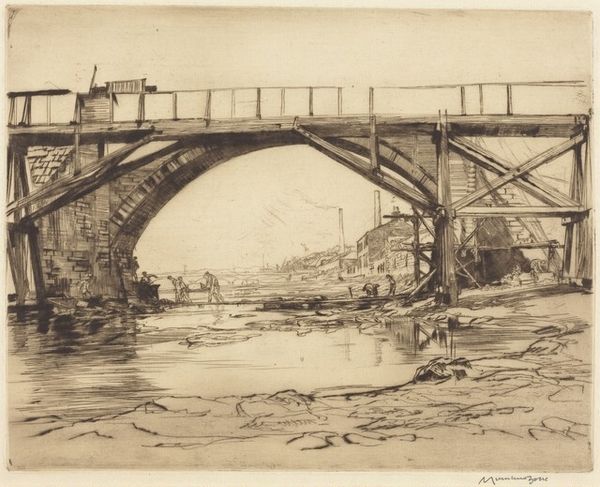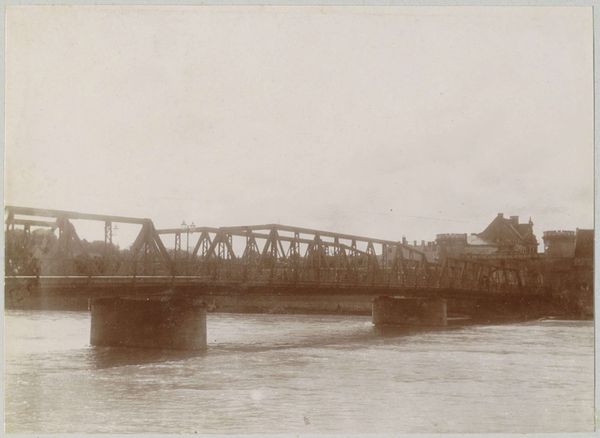
Dimensions: image: 450 x 685 mm support: 540 x 690 mm
Copyright: © Tacita Dean, courtesy Frith Street Gallery, London and Marian Goodman Gallery, New York/Paris | CC-BY-NC-ND 4.0 DEED, Photo: Tate
Editor: This is Tacita Dean’s “The Tragedy of Hughesovka Bridge,” currently residing at the Tate. The monochrome palette gives it a feeling of faded memory, almost like an old photograph. What do you see in this piece? Curator: The bridge, a symbol of connection and progress, is tragically broken. The white mass at its base suggests debris, almost like a wound. Bridges carry immense symbolic weight across cultures, representing transitions, journeys, and even the link between life and death. Editor: So, the tragedy isn't just physical, but also symbolic? Curator: Precisely. The bridge's collapse might signify a broken promise, a failed connection, or even a disruption in the narrative of progress itself. The artist invites us to contemplate the fragility of these symbols. Editor: I hadn't considered the broader cultural implications before. Thanks! Curator: It's amazing how a single image can carry so much history and meaning, isn't it?
Comments
tate 8 months ago
⋮
http://www.tate.org.uk/art/artworks/dean-the-tragedy-of-hughesovka-bridge-p20262
Join the conversation
Join millions of artists and users on Artera today and experience the ultimate creative platform.
tate 8 months ago
⋮
The Tragedy of Hughesovka Bridge belongs to a portfolio of twenty black and white photogravures with etching collectively entitled The Russian Ending. The portfolio was printed by Niels Borch Jensen, Copenhagen and published by Peter Blum Editions, New York in an edition of thirty-five; Tate’s copy is the fifth of ten artist’s proofs. Each image in the portfolio is derived from a postcard collected by the artist in her visits to European flea markets. Most of the images depict accidents and disasters, both man-made and natural. Superimposed on each image are white handwritten notes in the style of film directions with instructions for lighting, sound and camera movements, suggesting that the each picture is the working note for a film. The title of the series is taken from a convention in the early years of the Danish film industry when each film was produced in two versions, one with a happy ending for the American market, the other with a tragic ending for Russian audiences. Dean’s interventions encourage viewers to formulate narratives leading up to the tragic denouements in the prints, engaging and implicating the audience in the creative process.
